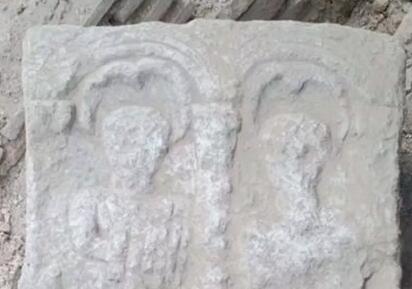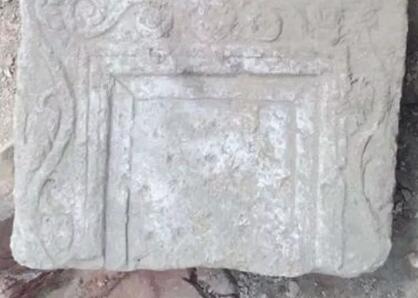Richly decorated roman grave stele that was never used found in kovachevsko kale fortress in northeast bulgaria
An Ancient Roman grave stele “with a very interesting iconography" which, however, remained unfinished and was never used has been discovered by archaeologists during excavations in the Kovachevsko Kale Fortress near Popovo in Northeast Bulgaria.
The Late Roman grave stele has been discovered in the first day of the 2018 summer digs at the Kovachevsko Kale Fortress, which have also yielded a large number of other artifacts from the 4th and th 5th century AD.
The Kovachevsko Kale Fortress is believed to have been built between 308 and 324 AD, during the reigns of Roman Emperors Constantine I the Great (r. 306-337 AD), and Licinius (r. 308-324 AD) who ruled the Roman Empire together as rivaling Augusti under the Tetrarchy system.

What is known today with its Bulgarian name, Kovachevsko Kale, was a medium-sized Roman city whose real name remains unknown.
However, it had impressive fortifications which were supposed to protect it against the barbarian invasions targeting the Roman province of Moesia Inferior (Lower Moesia, today’s Northern and Northeast Bulgaria) from the lands north of the Danube.
(Learn more about the Kovachevsko Kale Fortress in the Background Infonotes below!)
The city and the fortress were badly damaged in the invasions of the Goths in the 4th century and the Huns of Attila in the 5th century, and were ultimately destroyed for good in the invasion of Slavs and Avars at the end of the 6th century AD.
Back in 2015, the excavations of the Kovachevsko Kale Fortress have led to the discovery of a huge Ancient Roman building from the 4th century AD which appears to have been a horreum (i.e. a granary), and the conclusion that the city was settled en masse by Visigoths in the late 4th century.
And in 2016, the Popovo Museum of History announced that coins of a total of 42 Roman and Byzantine emperors and a number of other rulers from the Antiquity period had been discovered at the Kovachevsko Kale Fortress until then.
The Roman grave stele found at the start of the 2018 summer excavations in Kovachevsko Kale is a stone slab that is 110 centimeters (3.6 feet) tall, 80 centimeters (2.6 feet) wide, and 30 centimeters (1 foot) thick, reports BTA.
The iconography, i.e. the decoration of the Roman grave stele is typical of the 4th century AD, according to Plamen Sabev, Director of the Popovo Museum of History.

The image on the stele depicts a man and a woman. The man is shown with attributes symbolizing power – he wears a toga, and holds in his hand a codicil, a testamentary document.
According to the archaeologists, that means that a Roman Emperor granted him powers at the respective location.
However, the Roman grave stele seemingly remained unfinished because the space intended for an inscription was never filled.
According to Prof. Oleg Alexandrov from Veliko Tarnovo University “St. Cyril and St. Methodius", the lead archaeologists for the Kovachevsko Kale Fortress digs, the man depicted on the grave stele probably did not die in that place.
Thus, the Roman grave stele which had been prepared in advance for his burial was never put to use.
Another interesting 4th century AD artifact discovered at Kovachevsko Kale since the start of the 2018 excavations is a pair of bronze tweezers.

The archaeological team has also found over 120 Roman and Byzantine coins from the 4th and the 5th century AD which are proving of great use for the researchers in the dating of the Late Roman / Early Byzantine fortress.
The 2018 excavations of the Kovachevsko Kale Fortress are focused on the further study of the Roman thermae (public baths). About two-thirds of the building were exposed during the 2017 digs.
The archaeological team is also looking for a temple which they believe existed in the fortress.
“If we discover it, the 2019 excavations will be re-oriented, and the newly exposed structures will be conserved in order to make them accessible for visitors," Sabev says.
Lead archaeologist Oleg Alexandrov has been in charge of the digs at the Kovachevsko Kale Fortress near Bulgaria’s Popovo for the past four years.
The 2018 excavations have been funded by Popovo Municipality with a total of BGN 20,000 (appr. EUR 10,000; USD 12,000).

